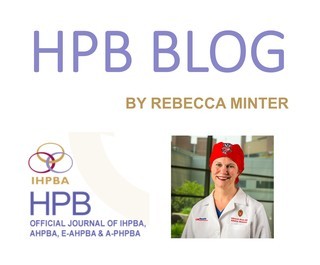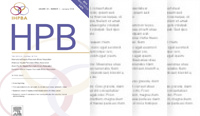International Hepato-Pancreato-Biliary Association
HPB Blog April 2019

In the Pursuit of Excellence……
As I contemplated the topic of my final blog as an Associate Editor for the journal, I reflected on my time with the journal over the last 6 years and I was struck by the constant commitment to the pursuit of excellence and the drive to make the journal better. Given my new Wisconsin roots, it reminded me of my favorite Vince Lombardi quote, “The spirit, the will to win and the will to excel ---- these are the things that will endure………..” In my time with the journal, I have been honored to work with Editors, an Editorial Board, and publishers who have had a vision for what HPB could be and have never stopped pushing that vision forward. Thus, as I reviewed the articles in this month’s issue of HPB, the diversity and quality of content was a perfect demonstration of the fruits of that constant pursuit of excellence and provided a perfect platform for my farewell blog. So, with no further ado – what awaits you in this month’s issue of HPB?!
Two studies this month sought to elevate our understanding of best practices for process measures in patients with pancreatic cancer and patients undergoing liver resection. Both studies elevated our understanding from that of mere expert opinion or results from a single center by utilizing a modified Delphi consensus methodology. Maharaj and collegues from Australia identified 27 final quality indicators for assessing the quality of care for patients with pancreatic cancer which can be implemented broadly and studied. Hallet et al from Canada identified best practices pre-, intra-, and post-operative patient blood management strategies for patients undergoing liver resection which could also be potentially bundled into an enhanced recovery pathway.
In two studies from the USA, authors sought to explore important questions related to care of patients with IPMN and pancreatic adenocarcinoma. In a multi-center study, Kerlakian and colleagues evaluated the impact of IPMN cyst location on the development of high grade dysplasia or invasive cancer, and identified that cysts within the head and uncinate process are independently associated with higher risk for malignant transformation. Bolton et al explored the impact of multi-agent contemporary chemotherapy followed by resection for patients with borderline resectable pancreatic adenocarcinoma (PDAC), and found that patients had equivalent outcomes to those with initially resectable PDAC.
Idrees et al from the USA utilized the Nationwide Inpatient Sample to look longitudinally at outcomes and costs in the evolution of staged colorectal cancer and liver metastectomy, versus concomitant resection of the colorectal primary and the liver metastasis. Combined resection was associated with both improved outcomes and lower costs. Imai and colleagues from Japan explore the implication of the location of the metastasis in the liver (right versus left) with respect to outcomes, finding that right-sided tumors portend a worse outcome.
In the realm of primary liver cancer, Martin et al from the USA explores the prognostic significance of tumor grade and sex on early stage intra-hepatic cholangiocarcinoma (IHC), and Jie and colleagues from China explore the importance of expression of Fibulin-1 in IHC in predicting patient outcomes. Wang and colleagues, also from China, evaluate the impact and efficacy of post-operative arterial chemoembolization (PA-TACE) in patients with hepatocellular carcinoma and microvascular invasion.
Last, but certainly not least, two studies evaluated predictors of outcome following liver transplantation. Robertson and colleagues from the UK identified urinary neutrophil gelatinase associated lipocalins measured immediately following transplant to be predictive of acute kidney injury following liver transplantation. Figueroa et al from France explored the predictive ability of the use of indocyanine green fluorescence imaging to evaluate graft perfusion during liver transplantation and relationship to primary graft dysfunction.
As you can see, there is tremendous diversity of content covering the breadth of HPB Surgery, and studies spanning the world. Please take a moment to read all of these articles and more in the April Issue of HPB. Thank you for the honor of serving as part of the evolution of our journal.
Corporate Partners
If you are interested in becoming a Corporate Partner of the IHBPA please contact industry@ihpba.org
Find out more


